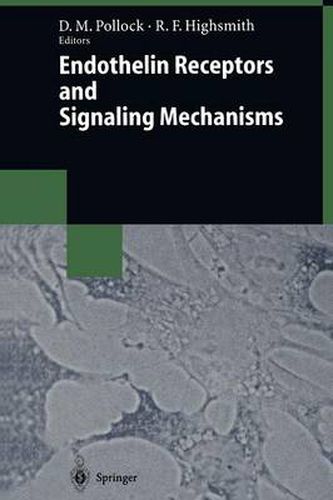Endothelin Receptors and Signaling Mechanisms

Endothelin Receptors and Signaling Mechanisms
This title is printed to order. This book may have been self-published. If so, we cannot guarantee the quality of the content. In the main most books will have gone through the editing process however some may not. We therefore suggest that you be aware of this before ordering this book. If in doubt check either the author or publisher’s details as we are unable to accept any returns unless they are faulty. Please contact us if you have any questions.
to the Endothelin System David M. Pollock ascular endothelial cells form a monolayer lining in all of the blood vessels of V the circulation. Initially, they were thought to function as a crude filter allow- ing nutrients from the blood stream to diffuse through to the underlying tissues without letting proteins or blood cells escape. We now know that endothelial cells are important regulators of circulatory function, due in large measure to their rec- ognized ability to synthesize and release many factors that regulate vascular smooth muscle tone. Endothelial-derived factors, including relaxing and contracting sub- stances such as prostacyclin, nitric oxide (NO), and endothelin (ET), have been identified as important contributors in the regulation of vascular tone. Endothe- lial cells have a highly active metabolic function and are involved in clearing a number of agents from circulating blood. In addition, they have the enzyme that inactivates bradykinin and converts angiotensin I into the very potent pressor agent, angiotensin II (Ang II). Endothelial cells also generate various proteins like von Willebrand’s factor, tissue plasminogen activator, growth promoting factors and lipids such as platelet activating factor. It is now clear that in addition to the regu- lation of vascular tone and hemodynamics, endothelial cells playa critical role in regulating growth and proliferative processes, inflammation and hemostasis.
This item is not currently in-stock. It can be ordered online and is expected to ship in 7-14 days
Our stock data is updated periodically, and availability may change throughout the day for in-demand items. Please call the relevant shop for the most current stock information. Prices are subject to change without notice.
Sign in or become a Readings Member to add this title to a wishlist.


